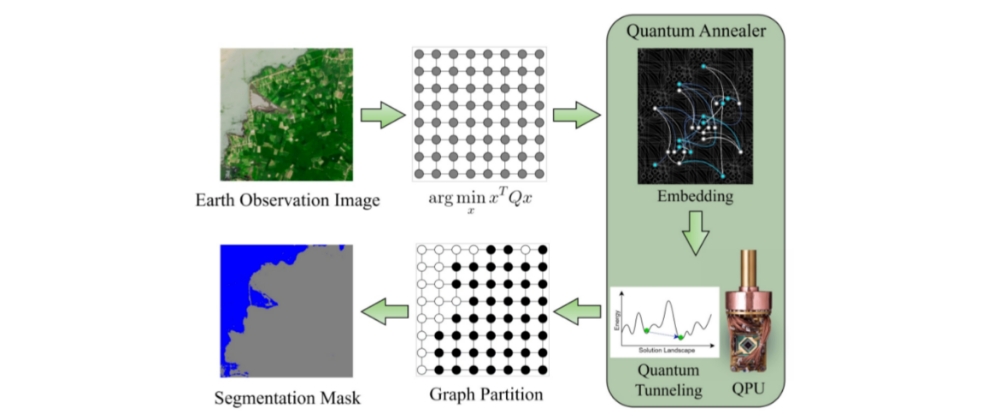Q-Seg: Quantum Magic for Image Segmentation (Yes, You Heard Right)
 Supreeth Mysore Venkatesh
Supreeth Mysore Venkatesh
Intro
Let's talk image segmentation. It's basically telling a computer, "Hey, divide this image up so it makes sense." Whether it's for recognizing cats in photos or spotting flood zones from space, segmentation is everywhere, from health diagnostics to satellites.
But here's the kicker, the algorithms keep getting better because of the hardware we're running them on. And guess what? There's a new player on the field: quantum computing.

Motivation (Why Bother?)
So, why the fuss over quantum? Classical image segmentation tools work great if you have high-quality images and plenty of labeled data. But real life's a bit messy. We're talking noisy, uncertain, or unlabeled data that these methods can't always handle well. Just to classify cats or dogs, classical methods need something like 80,000 labeled images to hit 99% accuracy on new data. Now, imagine that level of reliable data for segmentation, where we're classifying each pixel. That's an insane expectation!
And that's where Q-Seg strolls in, cool as a cucumber, ready to solve this problem without breaking a sweat. Think quantum computing meets unsupervised learning. We're talking about using quantum to break down complex images in a way that just wasn't possible before, at least not without some serious computational power and time.
How It Works (The Friendly Version)
Picture It: Imagine an image, now turn it into a graph where each pixel is a little node connected by edges. The weights on these edges tell us if two pixels are similar (neighbors in color, intensity, or texture) or not.
Quantum Twist: Now, this is where the quantum magic happens. We convert this whole thing into a quantum problem called QUBO (that's Quadratic Unconstrained Binary Optimization for the uninitiated). Our quantum computer, like the D-Wave Advantage, takes that huge graph and finds the "minimum cut" - the best way to slice up the image by minimizing the "cost" of cutting those edges.
Result: The result is a beautiful segmentation map - just what we wanted! We used quantum tunneling (yes, that's as cool as it sounds) to sift through an almost infinite number of possibilities and find the global best solution.

A Peek at the Math (Skip If You Dare)
For my math-lovers out there, here’s how we actually make it work. The edge weights between pixels p_i and p_j, for example, are calculated using this simple Gaussian metric:
$$w'(p_i, p_j) = 1 - \exp\left(-\frac{(I(p_i) - I(p_j))^2}{2\sigma^2}\right)$$
Now, don’t worry if that formula looks intense. Think of it this way: higher values mean pixels look alike, and low values mean they don’t.

Want the full guide? Check out my detailed blog for a deep dive into the method, code, and implementation tips!
References:
Full Blog: https://www.supreethmv.com/blog/posts/Q-Seg
Paper: https://ieeexplore.ieee.org/document/10669751
Subscribe to my newsletter
Read articles from Supreeth Mysore Venkatesh directly inside your inbox. Subscribe to the newsletter, and don't miss out.
Written by

Supreeth Mysore Venkatesh
Supreeth Mysore Venkatesh
I am a PhD researcher specializing in Quantum AI. My current research focuses on developing advanced algorithms for computationally intensive problems, with practical applications in satellite data analysis and management.